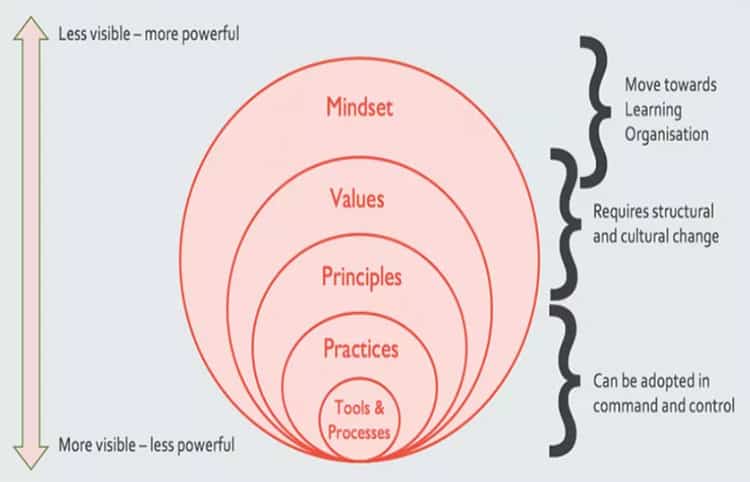Why allowing a collaborative, team-based culture allows your organisation to thrive

“In 2019, an intensifying combination of economic, social, and political issues is challenging business strategies. Faced with the relentless acceleration of artificial intelligence (AI), cognitive technologies, and automation, 86 percent of respondents to this year’s Global Human Capital Trends survey believe they must reinvent their ability to learn.”
What we really lack in this day is positive leadership role models who express hope, charisma and future pathways, and the organisations to support them. Those who move us beyond life’s simple pleasures, wants and needs. As children, adolescents and employees in the community and in work we have all experienced them. Their stories have shaped our experiences, challenged our understanding and inspired us to grow. If our outdated systems don’t support these leadership characteristics, then we must create ones that do.
The Individual and Cultural Identities
People need acceptance, respect and direction to grow. When defining the cultural identity of an organisation or community, the vision should embody purpose and a growth pathway. There is an undefined behavioural balance, which is not fully appreciated or understood: what develops in the individual, and expresses everything about their identity, is also conveyed in the community as purposeful interactions or our cultural identity.
If cultural identity could develop freely, it would demonstrate the purpose of the community. It would have a meaning closely associated with the habitat we occupy and encourage diverse niches to support greater opportunities. If a complementary niche were to open, someone in the community would learn the skills to fill it. Our lifecycle is designed to ensure this. This works the same way in organisations, as employees develop capability to align to strategy. If culture is left to develop freely, you can guarantee that niches will emerge to support life in its many shapes and forms.
This may seem philosophical; however, few organisations have defined their identity to determine how they positively influence people’s lives and support community opportunities. This responsibility falls to the marketing department to define and the public relations department to communicate. Leaders need to embody this understanding in the organisation.
Culture is an expression of how we do things and is closely aligned to our environment. While emotion permeates our bodies providing self-awareness and creative solutions, cultural awareness gives us the resilience and inclination to respond to opportunities in our environment.
Providing an open, supportive environment for employees to express their vulnerabilities, play to their strengths and be encouraged to grow creates an inclusive, high-performance culture. Allowing them the freedom to be imperfect, make informed mistakes, talk through resolutions and challenge themselves is all part of creating a ‘deliberately developmental organisation’. In most organisations nearly everyone is doing a second job no one is paying them for—namely, covering their weaknesses, trying to look their best, and managing other people’s impressions of them. There may be no greater waste of a company’s resources. The ultimate cost: neither the organisation nor its people can realise their full potential.
The more ‘organic’ forms of organisation cultivate empowerment in employees more than the hierarchical, rigidly structured companies of the past, and address the nature of management control. If management exists to support employees’ efforts to be fully productive members of their organisations and communities, then any form of control is counterproductive.

What is agile?
Agile work practices are not only for IT projects, they can work in any organisation. One approach to pilot the methodology is to dedicate a half day a week for employees to work on business improvement projects. Using the stop/start/pause change approach, an initial project would free up time by reviewing work practices to understand if they add value. If they don’t, the task can be stopped or paused so the employee’s time can be reallocated to work on business improvements. Employees agree and prioritise the projects based on their biggest challenges faced in performing their day-to-day responsibilities.
The project’s members can cross several functional streams. Employees are encouraged to join projects that promote their strengths and interest. A scrum master is appointed from the team based on their ability to coordinate the project through to conclusion. Simple project tools help the team to scope the project, build a roadmap, and assign accountabilities and timeframes. A project sponsor or leader facilitates and coaches the team, ensuring there are enough resources and time allowances to successfully complete the project. The self-supporting team members are encouraged to be open, responsible, show genuine commitment, respect all contributions, avoid groupthink by being allowed to be imperfect, be positive and have fun.
Going forward, organisations will position the sales, service and technology roles in-house and in employee communities to ensure skills and knowledge support the vital connection to the customer. An organisation’s purpose and culture are intrinsically tied to the community it serves. This is where meaning starts and ends for the employee – it’s their playground to develop skills, grow and create. Collaborative, inclusive, organic cultures challenged to transfer skills and share knowledge is where the future of organisations must be. These sharing cultures employ trust to free the creative mind, fuelling our curiosity and self-awareness. Culture will create the future.
Written by: Tony Holmwood.
[Image: What is agile? – Adventures with Agile, Simon Powers. Used with permission.]
Have you read?
# Best Music Schools In The World For 2019.
# Best Fashion Schools In The World For 2019.
# Best Business Schools In The World For 2019.
# World’s Best Hospitality And Hotel Management Schools, 2019.
# Best Law Schools In The World, 2019.
Bring the best of the CEOWORLD magazine's global journalism to audiences in the United States and around the world. - Add CEOWORLD magazine to your Google News feed.
Follow CEOWORLD magazine headlines on: Google News, LinkedIn, Twitter, and Facebook.
Copyright 2025 The CEOWORLD magazine. All rights reserved. This material (and any extract from it) must not be copied, redistributed or placed on any website, without CEOWORLD magazine' prior written consent. For media queries, please contact: info@ceoworld.biz











